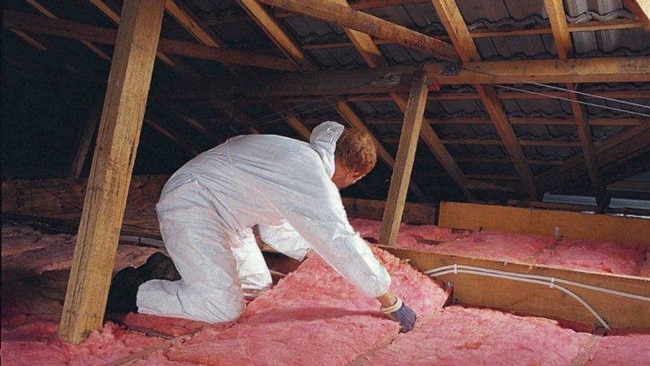Renters face freezing or dangerous DIY jobs to keep homes warm this winter
Australian renters are already being hit hard by a lack of vacant properties and sky high prices. But even after finding a place, there is one major issue.

Renters are being forced to suffer through icy temperatures as already limited housing stock fails to come close to the insulation standard.
The cost of living crisis is hurting renters on multiple fronts, with landlords hiking rents to pay down soaring interest rates and energy prices only set to rise in the coming months.
Rental properties across the country all have to meet the basic standards of a ‘fit for purpose’ home, in line with each state’s legislation.
This is generally agreed upon as hot water, flushing toilets, electricity supply, and other basic essentials that constitute a liveable home.
“That hasn’t been understood to include heating but in reality it could be understood in that way,” Better Renting executive director Joel Dignam said.
“What we are interested in as an organisation, is actually making it more explicit so the entitlement is already there.”
Winter temperatures inside Aussie homes
Last winter, Better Renting asked 70 renters across Australia to track the temperatures inside their homes over a 49 day period.
They found they were below the minimum healthy indoor temperature of 18C – set by the World Health Organisation – for 75 per cent of the time.
The participants shared harrowing details of what it was like living through the harsh winter conditions that seeped into their home.

“I wear multiple layers of thermal underwear. I‘m still cold. My skin still burns,” one participant said.
“We burn tissues, pages of old books, shoe boxes for kindling. We eat two meals a day,” another wrote.
“I have to reduce groceries to pay the electricity and gas bill. We share one chicken breast between three people and my kids are really thin,” a third shared.

The temperatures reported in the study were just as startling, with the average minimum daily temperature across the country at 10.8C.
In Tasmania the average minimum temperature reported by participants was 7.5, while Canberrans reported an average low of 7.4C.
The highest minimum temperatures were reported in states closer to the equator but when considering that homes in these regions are not built to handle the cold, the findings are not reassuring.
In Queensland, the average minimum temperature was 14.8C, while those living in the Northern Territory reported a low of 13.7C.
Old homes not fit for winter chill
Real Estate Institute of NSW chief executive Tim McKibbin said there are an overwhelming amount of rental properties that meet the “fit for purpose” requirements but weren’t built to modern standards.
“Properties that were built 50 years ago, met the building standards of that time. Those properties wouldn't have the insulation, or for that matter other features that modern properties do, like heating and cooling,” he said.

A property’s insulation level is not protected under most states’ rental legislation, except in the ACT where a minimum insulation standard came into effect on April 1.
It requires landlords to provide adequate ceiling insulation that can keep tenants warmer in winter, and cooler in summer.
Zero-interest loans of up to $15,000 are available for eligible rental providers to retrofit ceiling insulation.
Extreme lengths to heat homes
Renters across the country are turning to extreme measures to keep their houses warm as energy prices climb.
A Brisbane single mother said she has been collecting offcuts of insulation from kerbside collections and building sites and putting it in the roof herself.

Renters living in insulated houses in Brisbane are saving $545 on average a year in energy costs, according to new research from Renew.
Real Estate Institute of Queensland chief executive Antonia Mercorella said it concerned her “immensely” to hear stories about renters forced to DIY their insulation.
“It’s incredibly dangerous, and obviously can lead to serious risk or fatality in more extreme cases,” she said.

“While I appreciate that none of us want to feel cold and I totally understand that, I think it’s incredibly concerning if people are going to those sorts of lengths.”
Mr McKibbin urged renters to seek consent from their landlord before starting to modify the property to ensure they are not putting themselves in harm’s way.
“They need to be put in by the properly qualified people so that we don't expose the tenant to danger,” he said.
How can I negotiate with my landlord to improve my home?
A shortage of affordable housing has intensified an age old issue for renters in the Sydney rental market where tenants fear of raising a concern with their landlord for fear it will cause tension.
Now, the scales have tipped so far into the hands of landlords, who have a queue of desperate renters lining up to fill their homes if an existing tenant becomes too much of a complainer.
“People will take what they can get when they’re looking for a property and then they’ll put up with a lot once they’re in that property,” Mr Dignam said.
“They’re so worried about potentially losing that and having to get out in the market again,”
“Agents know this and there is really no market pressure on them to deliver a good service for renters.”
However, Mr Dignam said he has seen some successful cases of renters coming to a compromise with their landlords and urged renters to give it a go.
“What seems the most effective is creating a bit of an empathetic connection,” he said.
“Say things like, ‘I’m really worried about keeping the room warm overnight, it would make a big difference if we could get this property insulated as a one off’.”
But, he said, anecdotal evidence suggested a number of real estate agents are not passing this communication onto the landlord in good faith.






